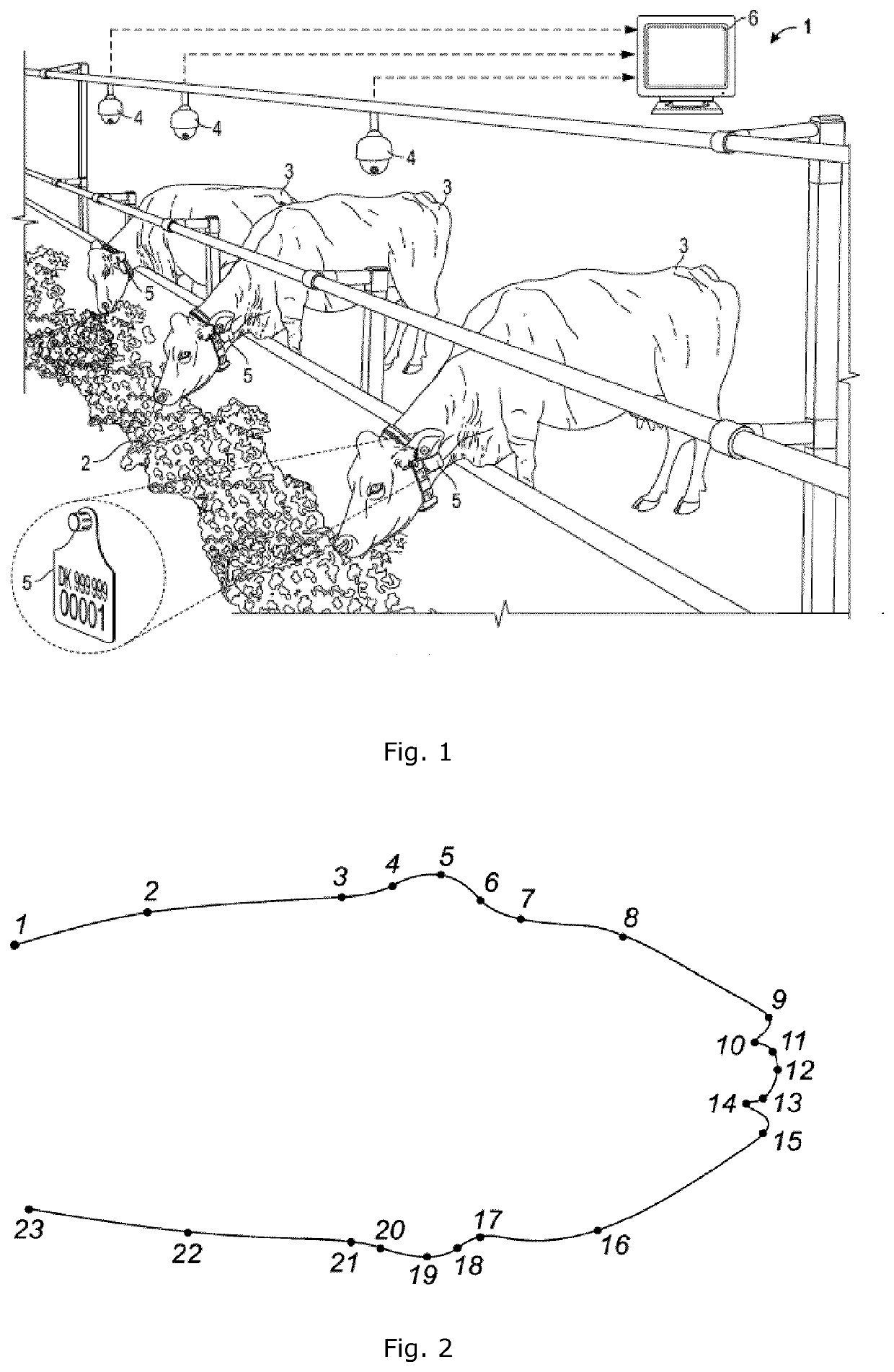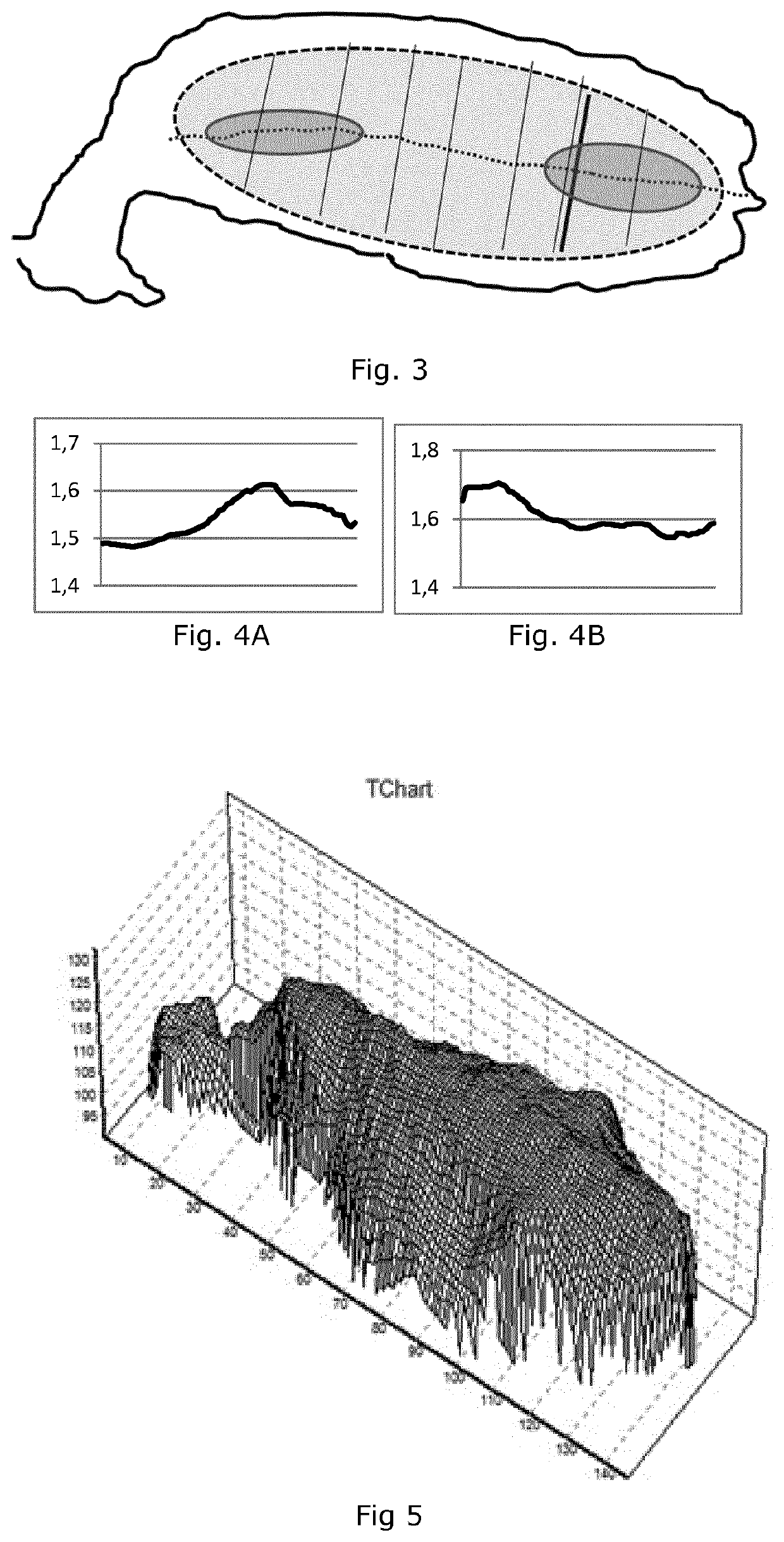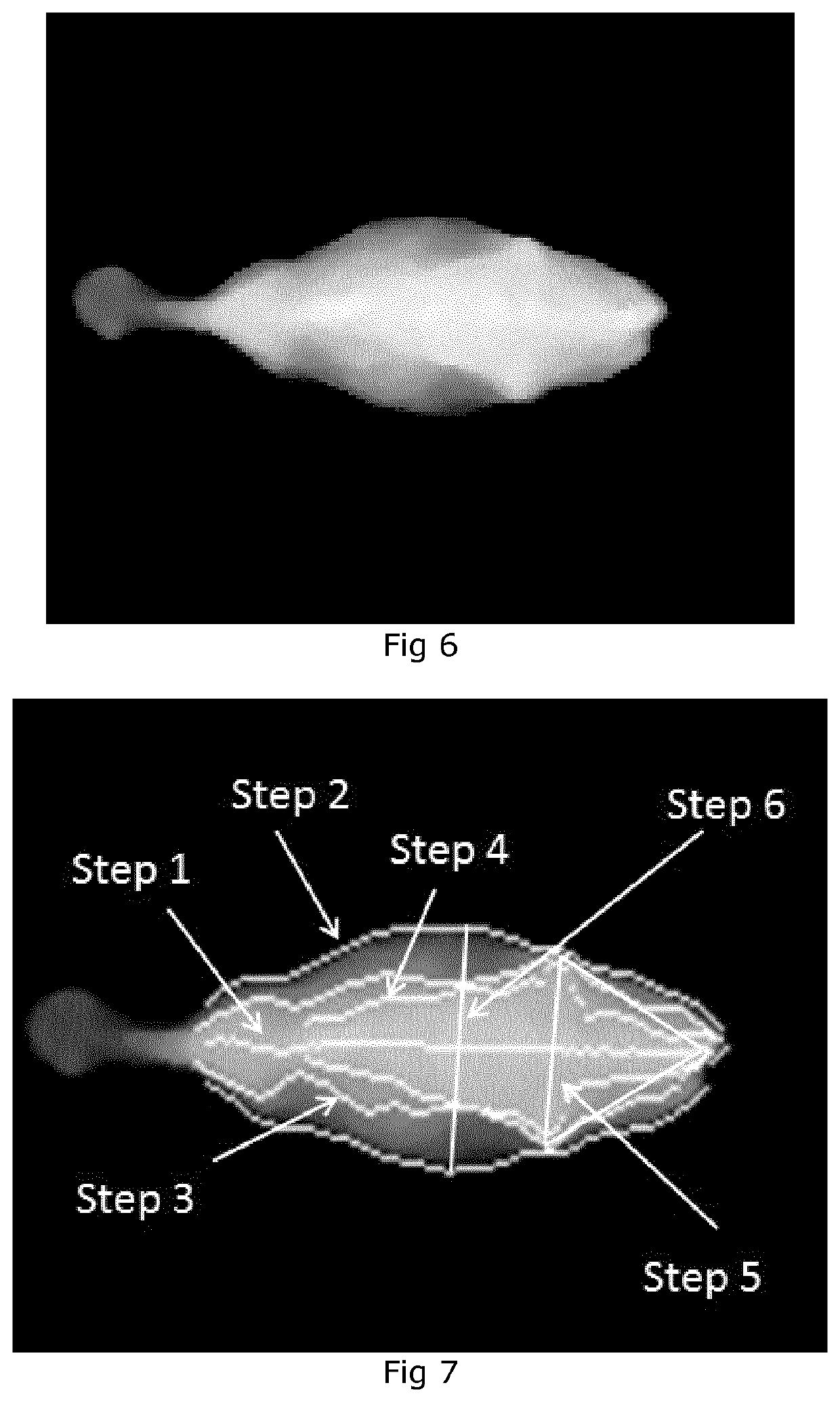System and method for identification of individual animals based on images of the back
a back image and system technology, applied in the field of system and method for identifying individual animals based on back images, can solve the problem of virtually impossible to register the feed intake of each animal
- Summary
- Abstract
- Description
- Claims
- Application Information
AI Technical Summary
Benefits of technology
Problems solved by technology
Method used
Image
Examples
example 1
[0203]The method was developed by testing whether a number of Jersey and Holstein cows could be determined / identified from each other based on images of their backs. At a Danish farm with dairy cows 3-D images of cow's backs were provided. The system for obtaining images included a 3D camera (Swiss Ranger 4500 from Mesa Imaging, Switzerland, which is an IP 67 camera suitable for rooms with dust and moisture). In parallel with the 3D camera, two Basler black-and-white industrial cameras were mounted. The cameras were mounted 4.5 meter above the floor level. The distance from the camera to the upper part of the back of the cows was about 2.7-3 meter depending on the height of the cows. Images of the back of the cows were obtained when the cows were on their way to the milking station and at a position where the cows walked one after another. Hereby images were obtained with only one cow at each image. From the obtained 3D-images contour plots were performed as further described in Exa...
example 2
[0208]The identification method was further tested in another experiment with dairy cows of the Jersey race. 3-D images of cow's backs were provided with a system included a 3D TOF (time-of-flight) camera (Swiss Ranger 4500 from Mesa Imaging, Switzerland). Also two Basler black-and-white industrial cameras were used. The three cameras were connected to a computer making it possible to store and analyze images. The 3D camera was located 3.2 M above the floor at the entrance to the milking station and where the corridor has a width of about 1 M. In a wall along the corridor an ID-reader was located to obtain a signal from the ear tag each time a cow passed the ID-reader. A trigger signal was sent to the computer each time a cow passed the ID-reader. The trigger signal prompted the computer to store one image from each of the three cameras with 0.5 sec between the exposures. The ID-reader also stored the ID of the cow obtained from the ear tag, and these ID's were only used to verify t...
PUM
 Login to View More
Login to View More Abstract
Description
Claims
Application Information
 Login to View More
Login to View More - R&D
- Intellectual Property
- Life Sciences
- Materials
- Tech Scout
- Unparalleled Data Quality
- Higher Quality Content
- 60% Fewer Hallucinations
Browse by: Latest US Patents, China's latest patents, Technical Efficacy Thesaurus, Application Domain, Technology Topic, Popular Technical Reports.
© 2025 PatSnap. All rights reserved.Legal|Privacy policy|Modern Slavery Act Transparency Statement|Sitemap|About US| Contact US: help@patsnap.com



